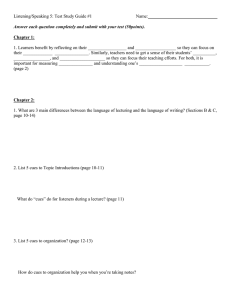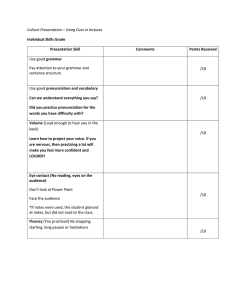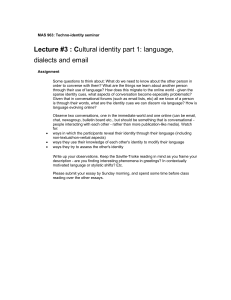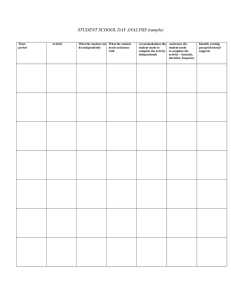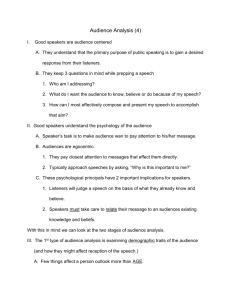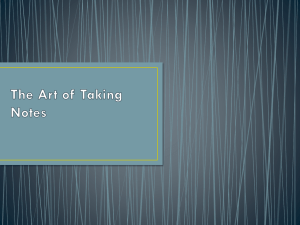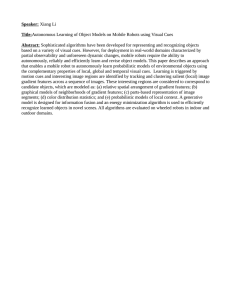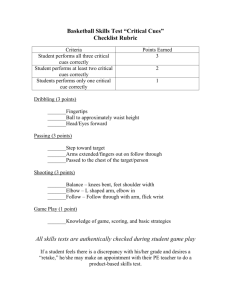Presenting using Presentation Note Cards
advertisement
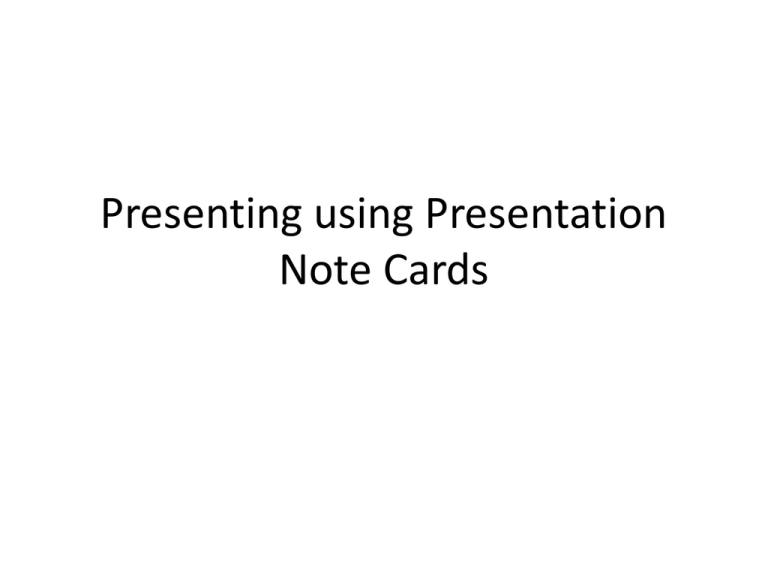
Presenting using Presentation Note Cards Preparation Outline • Before you can present presentation note cards you will need to create a preparation outline. Preparation Outline • You use the preparation outline ONLY for organizing your ideas and for preparing your speech. Preparation Outline • NEVER use your preparation outline to practice or prepare for your speech or presentation. Preparation • Practice and deliver your speech using brief presentation notes that are based on your presentation outline. Presentation Notes • Presentation notes are brief reminders of what the presenter plans to cover during the speech or presentation. Presentation Notes • Presentation notes includes information that the speaker does not want to risk forgetting. Presentation Notes • Good presentation notes remind you not only of what you have to say, but also how you want to say it! Presentation Notes • Your presentation notes should include delivery cues or directions for delivering the speech. Make the delivery cues stand out from your content notes. • Pause at this point! • Look up! • Slow down! • Speak louder! Presentation Notes • Sometimes, speakers use full sheets of paper for their presentation notes. • Many speakers, however, find paper sheets to be noisy and difficult to handle, so they prefer using note cards. Presentation Notes • Note cards or index cards are available in different sizes and different colors. • They are all small enough to handle and stiff enough not to rustle. Presentation Notes • Your presentation notes can be: – Hand written – Typed or word processed – Drawn as a concept map or web – Outlined Presentation Notes • Whatever form your notes take, the most important thing is that your notes make sense to you! Presentation Notes • You may find it helpful to use the following guidelines for creating and using presentation notes. – Plan your note cards according to logical blocks of material or the structure of your preparation outline. • For example: Your first note card could be labeled Introduction and your last card could be labeled Conclusion. – Use only one side of a note card. – Number your note cards to prevent you from shuffling the notes or panicking if your cards get out of order. Guidelines • Use large letters and dark ink. • Make sure your notes are neat and easy to understand. Your presentation notes should be clear and easy to read. Don’t speak from messy, scribbled notes that are hard to follow. • Make sure your note cards have lots of white space on them. • Write down only the minimum number of words or phrases needed to jog your memory. Guidelines • Limit the number of note cards you use. You don’t need a lot of note cards to remember your speech. Too many note cards actually interfere with good communication. • If too much is written on a note card, you may overlook key points or spend too much time looking at your notes trying to “find” your place. • Don’t write down every word of your speech! Write down only points that you want to remember. Then, simply tell your audience, in whatever words that come to mind, the idea that you jotted down. You’ll sound natural and spontaneous. Guidelines • Don’t read from note cards! You need to be able to glance quickly at your notes and immediately understand what is on your note card. • You should be looking at your audience 95 percent of the time and not at your note cards! • Use the same set of note cards when speaking that you used while rehearsing. You’ll be familiar with your notes and cues. Don’t be afraid to use notes! • Presentation notes, when created and used correctly make you feel more confident, selfassured, and secure as a public speaker!
